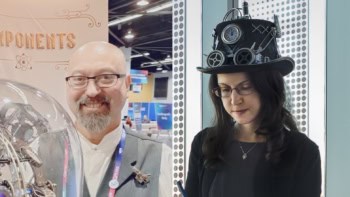With a revised edition of a landmark book about the public image of nuclear power due out soon, Robert P Crease explains why its central message is still relevant more than 20 years on

In 1988 the science historian Spencer Weart published a groundbreaking book called Nuclear Fear: A History of Images, which examined visions of radiation damage and nuclear disaster in newspapers, television, film, literature, advertisements and popular culture. In his analysis, Weart noticed something odd about nuclear-disaster scenarios: we have seen them all before. He found that their imagery and plots eerily resemble those of pre-nuclear and even pre-technological disaster scenarios.
In involving arrogant scientists who play God by probing nature’s secrets with special machines before unleashing powers that they cannot control to destroy the world, these plots are suspiciously similar to earlier stories involving magicians or alchemists who play God by probing nature’s secrets with special devices or processes before eventually unleashing world-destroying powers that they cannot control. Tales of witches unleashing magical powers, Weart noted, have much to do with anxieties about socially disruptive classes of people. Likewise, fictional tales of technological apocalypse have much to do with anxieties about modern civilization, the role of technology and the social authority of scientists. The plot is what Weart calls “Faust’s sin of prideful power divorced from moral responsibility”; the new nuclear technology merely feeds the image by giving the dangerous scientist more expensive and flashier hardware to do it with.
Nuclear fear, Weart concluded, has less to do with our knowledge of atomic structure and its exploitation than with psychology, history and culture. His book explained why public discussions of nuclear power tend not to centre on issues but to be derailed by passions having nothing to do with either the technology or the wisdom of its use.
Has nothing changed? Weart raises this question in a forthcoming revision of his 1988 book and in the article “Nuclear fear 1987–2007: Has anything changed? Has everything changed?”, which appears in the new book Filling the Hole in the Nuclear Future edited by Robert Jacobs (2010, Lexington Books). Weart’s surprising answer, backed up by polls, surveys and media analyses, is that nuclear fear declined in the wake of two events of 1986. One was the start of détente after that year’s Reykyavik summit between presidents Reagan and Gorbachev. “A significant part of the fear of nuclear reactors is displaced fear of nuclear war,” Weart told me. “With the ending of the Cold War, it was natural for this general fear of being irradiated and blown up to diminish.”
The other event was the Chernobyl reactor disaster, coming seven years after the Three Mile Island accident. “[I]n a seeming paradox,” Weart writes in his recent article, “the worst civilian nuclear disasters in history ultimately brought a decline in public concern about nuclear power.” By silencing the utopian claims of nuclear-power proponents, fostering more cautious technologies, and curtailing reactor start-ups, the accidents leached energy from the anti-nuclear movement.
Those born after 1986, says Weart, “did not grow up in a world where talk of nuclear war, radiation, nuclear reactors and so forth showed up frequently in the news, and even sometimes in personal relations, in a context full of anxiety”. Indeed, nuclear reactors are now prosaic enough to be mocked in cartoons. “How many have first met a nuclear reactor in the introductory sequence of the perennially popular cartoon show The Simpsons, featuring a lovable but amusingly incompetent reactor operator?”
Changes afoot
So has everything changed? No. Nuclear fear is still potent, losing none of its old associations and gaining new outlets. “Nuclear terrorism”, Weart writes, “does trump all.” When the Bush administration wanted to mobilize public opinion for its 2003 invasion of Iraq, for example, its most effective tool was an appeal to (imagined) Iraqi weapons of nuclear, rather than biological or chemical, destruction. Nuclear threats are still the terrorist weapon of choice, both in popular culture – films and computer games – and also in the real world. “The complex of imagery walks in the real world, to no good result,” Weart writes.
Last summer, a right-wing blogger publicized a 2.5 minute video of Shirley Sherrod, a Department of Agriculture official in the Obama administration, seeming to admit to having mistreated a white farmer. The ugly, racist portrait that the video created was so repugnant that Sherrod was fired immediately, before even being consulted. The blogger, it turned out, had sharply edited a 20-minute speech to make it emotionally repellent. Anyone who listened to the entire speech understood that Sherrod’s message was about the need to treat everyone equally. It was a lesson in image manipulation. Sherrod was offered her job back afterwards, when her message was considered coolly and in context.
Reactors, too, are vulnerable to what one might call “Sherroding”. Nuclear fear cannot be switched off, for the associative and affective reasons that Weart identified. Until recently, the anti-nuclear movement had skilfully wielded powerful images of worst-case scenarios, mushroom clouds and genetically damaged children to create a “cultural hysteresis” in which nuclear reactors are equated with Chernobyl, and nuclear disasters with Hiroshima. Weart may be right to see a diminution of nuclear fear, but activists can still inflame it. His work helps lessen our dependence on historical events and, by giving us an understanding of the deep non-scientific roots of nuclear fear, helps us address it.
Given the planetary threat posed by global warming, and the possible use of nuclear power as an alternative to ultimately dangerous fossil-fuel technologies – which store their wastes in the atmosphere, for free – optimally addressing global safety requires the ability to debate reactor technology, its strengths and weaknesses, independently of that cultural hysteresis. Otherwise, there may be no afterwards in which to consider it coolly.



